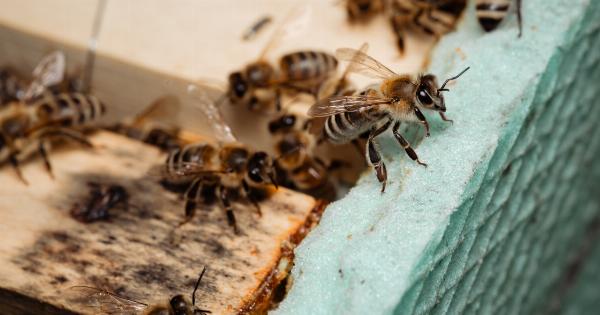Wasp stings are common and often only result in minor symptoms such as pain, redness and swelling. However, for some people, wasp venom can be deadly.
In this article, we will explore when wasp venom turns deadly, why it happens and what can be done to prevent it.
What is in wasp venom?
Wasp venom contains a complex mixture of components including enzymes, peptides and proteins. Some of these components are toxic to humans and can cause an allergic reaction.
When does a wasp sting become dangerous?
A wasp sting becomes dangerous when a person has an allergic reaction to the venom. An allergic reaction occurs when the immune system overreacts to a foreign substance such as wasp venom.
In some cases, a person may have a life-threatening reaction known as anaphylaxis.
Symptoms of a dangerous reaction to wasp venom
Symptoms of a dangerous reaction to wasp venom include:.
- Difficulty breathing
- Swelling of the face, throat or tongue
- Rapid heartbeat
- Dizziness or fainting
- Stomach cramps
- Nausea and vomiting
- Loss of consciousness
Who is at risk of a dangerous reaction to wasp venom?
Anyone can have a dangerous reaction to wasp venom, but some people are at higher risk than others. Risk factors include:.
- A history of allergic reactions to insect stings
- A family history of allergies
- Asthma
- Certain medications such as beta blockers
What should you do if you are stung by a wasp?
If you are stung by a wasp and experience symptoms of a dangerous reaction, seek medical help immediately. If you have an epinephrine auto-injector, use it as directed and then seek medical help.
If you do not have an auto-injector, try to remain calm and seek medical help right away.
If you are not experiencing symptoms of a dangerous reaction, remove the stinger if it is still in your skin. Wash the area with soap and water and apply a cold pack to reduce swelling.
Over-the-counter pain relievers such as acetaminophen or ibuprofen can help relieve pain.
Preventing dangerous reactions to wasp venom
There are several steps you can take to prevent a dangerous reaction to wasp venom:.
- Avoid wearing bright colors and strong fragrances which can attract wasps
- Avoid eating outside and keeping food covered to avoid attracting wasps
- Keep windows and doors closed and install screens to prevent wasps from entering your home
- If you are allergic to wasp venom, wear a medical alert bracelet and always carry an epinephrine auto-injector
Treatment for dangerous reactions to wasp venom
Treatment for a dangerous reaction to wasp venom typically involves epinephrine, a medication that can reverse the symptoms of an allergic reaction. Other medications may also be given to help manage symptoms such as antihistamines and corticosteroids.
In severe cases, hospitalization may be necessary to closely monitor the person and provide additional treatment as needed.
The bottom line
Wasp venom can be dangerous for some people and result in a life-threatening allergic reaction known as anaphylaxis. It is important to recognize the symptoms of a dangerous reaction and seek medical help right away.
Taking steps to prevent wasp stings can also reduce the risk of a dangerous reaction.































